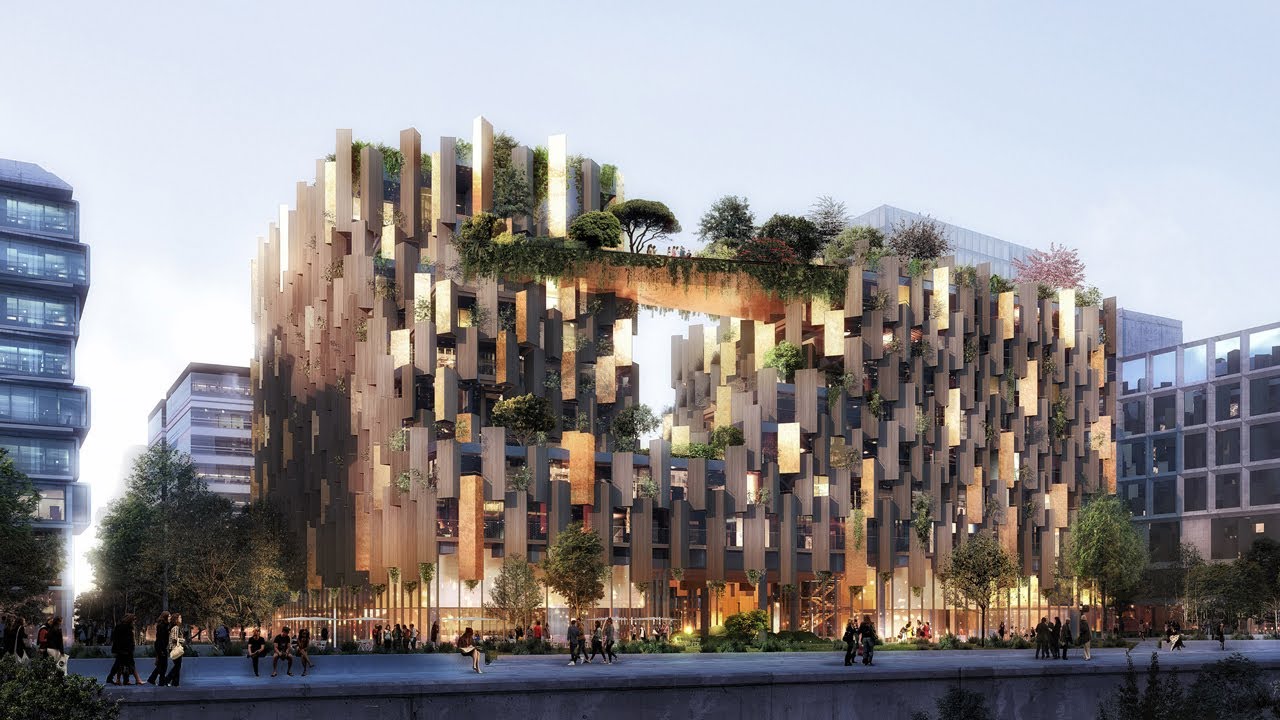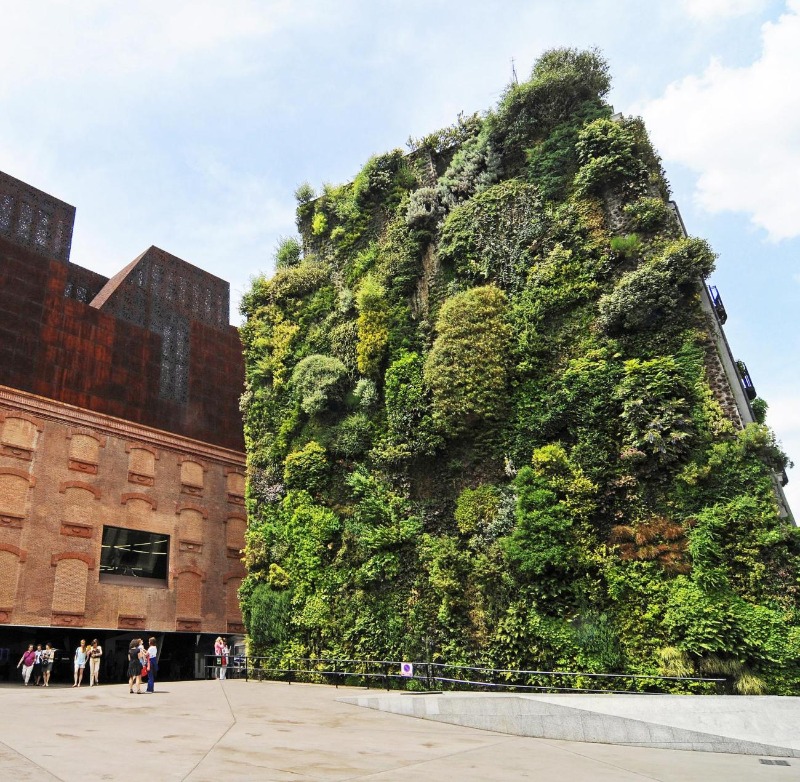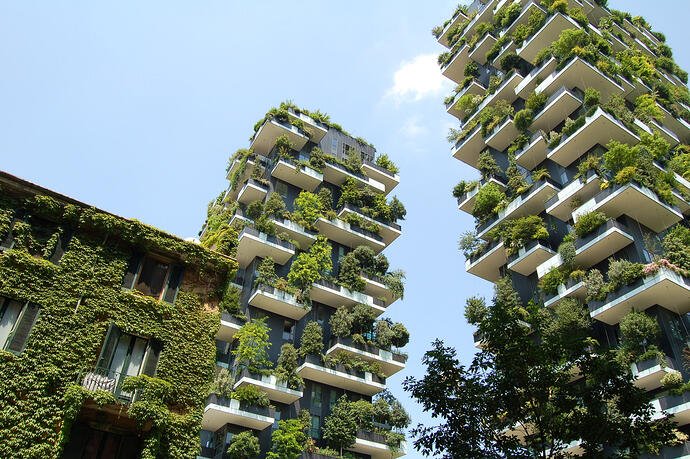During this project we learned a lot about the importance of building materials. They have a big impact on the buildings but also on the environment. By using building materials like rammed earth we can safe masses of energy for other things.
We also realised how difficult it is to make environmentally friendly adjustments, as there are many individual variables in a building project.
Even though we didn't expect the complexity of this project, we managed to put together an informative project.
By Dario & Justin
Exciting projects in the context of city climate & city trees are in development or "growing"; each project team as well as all collaboration teams get their own category. Here you collect all material, text, media, etc. for sharing with others and later for your publication on the website dontwastemy.energy.
The journey of discovery is underway!
What is the most eco-friendly building material?
We decided to answer this question in our project. During the last months we used selfmade graphics, calculations and science-based data for a result.
If you are interested we would be happy if you visit our post on Wordpress by the folloying link.
In very densely populated cities like Zurich, the many buildings have an immense impact on the city's climate and the environment. Based on this knowledge, we see it as important to think about the previous construction of buildings.
In our project we would like to show the difference between the building material and the surface of different buildings. We investigate and compare common building materials with each other, as well as different possibilities of surface texture. From this, we create two models which are the best and worst combination and what differences they represent for the climate. The focus is on the lifecycle of the different building materials and the resulting consequences for the environment and climate.
Taking into account various factors to determine the models there may be different results depending on the location. As a team based in Zurich, we create the model from a Swiss perspective. A cooperation to see a different point of view and therefore different insights could be quite useful.

Justin & Dario
Possible interview partners:
Heredium (company that wantet to build green facades on the Löwenstrasse in Zürich)
Herr Leuenberger (expert)
Stadtgärtnerei Zürich (Has information and knowledge about green facades)
(in progress)
by Dario & Justin
Our research is divided in two areas, one for each part oft the project. The aim of both areas is to determine which factors are vital to find out which building material is the best and which facade ist he best.
In the first part we came to the conclusion, that there are several properties we need to consider to determine the optimal building material:
Ecological properties of building materials :
- Energy requirements for production, transport and disposal
- Pollutant emission during production, processing, use and disposal
- Use of recycled material
- durability, easy to repair
- Reusability
- Regionality
Furthermore we already searched for the conventional building materials that we could use to create the model. We will use the following building materials for our model:
- Natural stone
- Brick
- Concrete
- Steel
- Wood
In the second part we looked for factors to measure the impact of the different facades on the climate. We found out that the microclimate is crucial for our project. The microclimate is the climate close to the ground up to a height of 2 metres, or the climate that prevails in a small, precisely defined area. In our case we observe the microclimate of a city
Regarding the microclimate, the reflection of the facade is decisive. In the past, there has been criticism that glass facades can produce a very hot reflection of up to 100 degrees, which is extremely harmful to the microclimate. Currently, the impact of microclimate is not taken into account when distributing sustainability certificates. The reflection causes the floor to heat up critically. It also turned out that planted facade, according to our expectations, the optimal facade is, while glass will be one of the worst.

https://www.fachwerk.erz.be.ch/fileadmin/user_upload/Downloads/Module/Modul4.pdf
https://www.energie-experten.org/bauen-und-sanieren/baustoffe
https://klima.org/wissen/mikroklima/
http://www.gruenstadtklima.at/mikro.htm
https://www.espazium.ch/de/aktuelles/glasfassaden-eine-gefahr-fuer-ihre-umgebung
https://www.oekologisch-bauen.info/baustoffe/dach/fassadenbegruenung/#:~:text=Die%20positiven%20Auswirkungen%20einer%20begrünten,Umgebungsluft%20gebunden%20und%20Sauerstoff%20gebildet.
https://www.urban-hub.com/de/sustainability/innovative-baumaterialien/
https://www.umweltnetz-schweiz.ch/themen/ressourcen/33-beton-–-bauökologisch-sinnvoll.html
Justin & Dario
(I) Names of research team: Dario Di Fazio & Justin Valiyaveettil
(II) Your Question (What?)
-Wider question (with link to your post): What are the differences between the best and the worst combination of building materials and facades?
-Refined question: (1) How are the building materials brought and disposed? (2) What impact to our environment do different surface textures have?
(III) Your Answer: Project description, methods/techniques, etc. (How?)
-Interviews with experts and/or companies who've built in cities.
-Research in the internet
-Visiting some buildings we compare
-Get some informations from friends who work in this field
(IV) Diverse, e.g. material needed, expert proposals, difficulties
-equipment for taking pictures and to record the interview
by Dario & Justin
The fundamental question we face with our project is: "Which builiding material combined with which surface results in the best combination for buildings in city considering the impact on climate and environment?" In addition we ask ourselves which is the worst combination to determine the difference.
The answer to this question is really complex and requires a lot of research to answer it finally. From our point of view at the beginning of the project we think that a combination between natural stone as a building material and a planted facade will be the optimal concept. As the worst combination we imagine a combination between concrete and a dark surface which reflects strongly. The difference between these two models considering climate and environment will be huge, thats for sure.
Justin & Dario
When we close our eyes we see a city with a lot of grey surfaces. The materials are brought to our country by ship and airplane, which causes great damage to our enviroment. In summer the city gets hot and the air thickens. We imagine most buildings to be cost efficient and paired up in dense structures to save space.
But we can also think of a perfect scenario with buildings with green space on the surface to let the city breathe. Eco-friendly materiels like wood and natural stone are used for constructs and everything is well distributed.
We can already imagine how in our project we are going to compare these two scenarios and methods with each other. By visiting places which represent both versions of city fassades we are also going to see how much of our imagination matches reality.
Dario & Justin
In very densely populated cities like Zurich, the many buildings have an immense impact on the city's climate and the environment. Based on this knowledge, we see it as important to think about the previous construction of buildings.
In our project we would like to show the difference between the building material and the surface of different buildings. We investigate and compare common building materials with each other, as well as different possibilities of surface texture. From this, we create two models which are the best and worst combination and what differences they represent for the climate. The focus is on the lifecycle of the different building materials and the resulting consequences for the environment and climate.

Justin & Dario